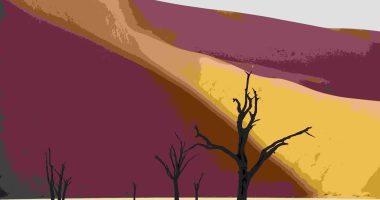Nestled in the northeastern corner of Namibia, the region known as Caprivi Strip is a tapestry of history, culture, and resilience. With a complex past marked by shifting borders and political challenges, the Caprivians have emerged as a diverse community closely connected to the waters of the Zambezi River. Their journey is one of adaptation, cultural heritage, and a steadfast relationship with the natural world.
Advertisement
1. From Strategic Enclave to Vibrant Culture
Named after Count Leo von Caprivi, the German negotiator at the Berlin Conference, the Caprivi Strip has seen its share of historical shifts. Previously administered by multiple countries, it became a strategic point during the fight for Namibian independence and later experienced political upheaval. Despite these challenges, the Caprivians have maintained their rich cultural heritage, carving an identity deeply rooted in their connection to the land and waterways.
2. A Tapestry of Ethnicities and Languages
The Caprivian region is home to six main ethnic groups: the Masubia, Mbukushu, Mbalangwe, Mafwe, Totela, and Mayeyi. These groups share diverse Bantu languages and dialects, creating a vibrant linguistic mosaic. While Lozi serves as the official language, each community preserves its unique cultural and linguistic heritage, reflecting their historical roots and connections.
3. Riverside Livelihoods
The lifeblood of the Caprivians is the rivers that crisscross their region. The Zambezi, Kwando, Linyanti, and Chobe rivers sustain both livelihoods and culture. During flood seasons, the rivers inundate the land, making wooden mekoro canoes essential for transportation. Freshwater fishing, especially along the rivers’ banks, is crucial for food and income. The abundant water resources have fostered a deep connection to the rivers, shaping Caprivians’ way of life.
Advertisement
4. Agriculture and Heritage
In Caprivi, agriculture is more than sustenance; it’s a part of their identity. Mahangu, or pearl millet, is a staple crop that forms the foundation of many traditional dishes. Cattle, particularly the Sanga breed, hold social, economic, and cultural significance. They represent tangible resources and bestow land rights and status to their owners. While fishing and agriculture form the backbone of the local economy, ancient crafts like pottery and basket-making have resurfaced, empowering Caprivian women and providing families with income.
5. Preserving Traditions and Nurturing Progress
Amidst changing times, Caprivians remain steadfast in preserving their traditions. The rhythm of their lives is intertwined with the flow of the rivers, reflecting a deep symbiosis with the natural world. As the Caprivians navigate modern challenges, they do so with a reverence for their heritage and a determination to sustain their unique way of life.
Conclusion
The Caprivians stand as guardians of the Zambezi, their history woven into the fabric of the land and the rivers that sustain them. In a region marked by shifts and challenges, they hold onto their cultural heritage, languages, and traditional practices. As they balance tradition with progress, the Caprivians offer a glimpse into a way of life that honors the past while embracing the future.

